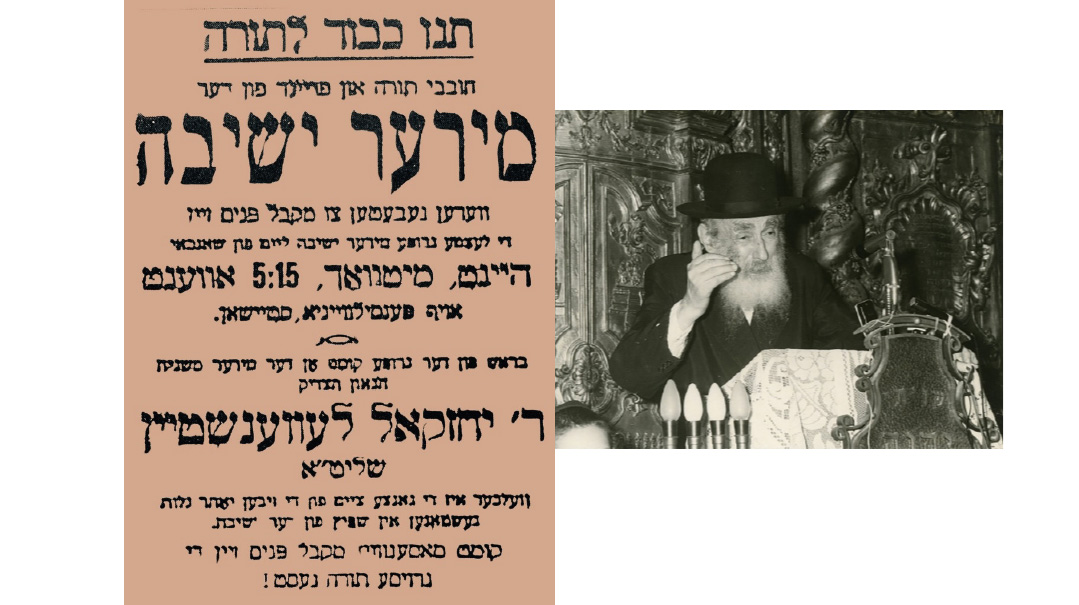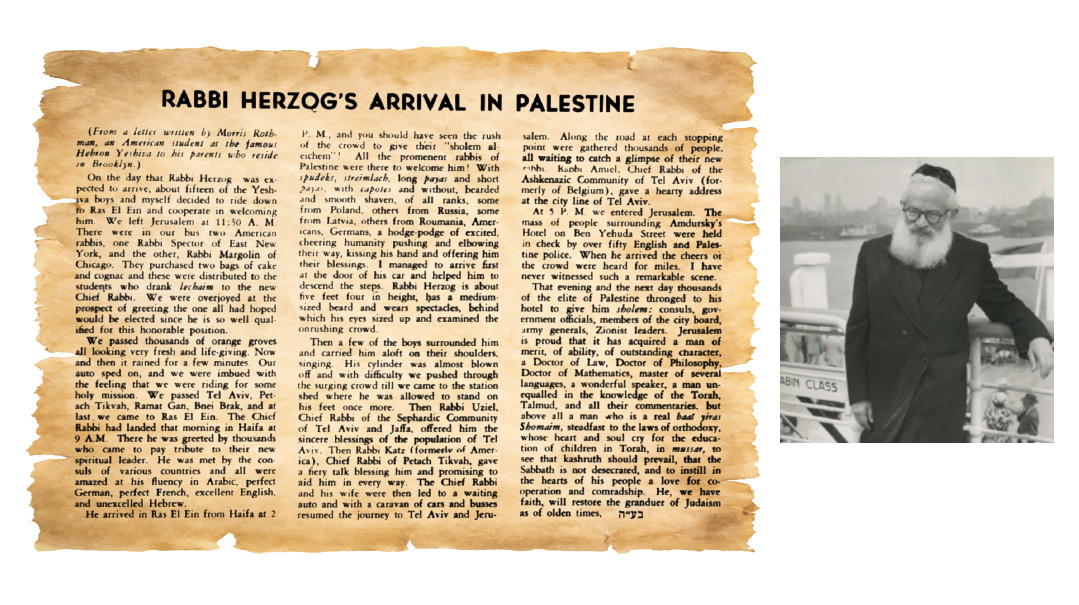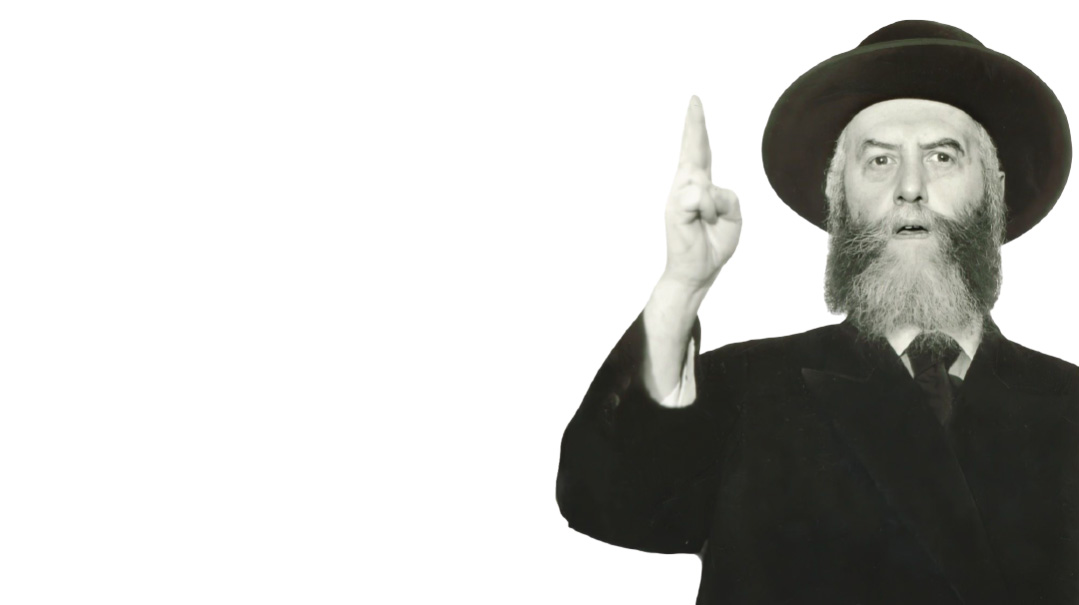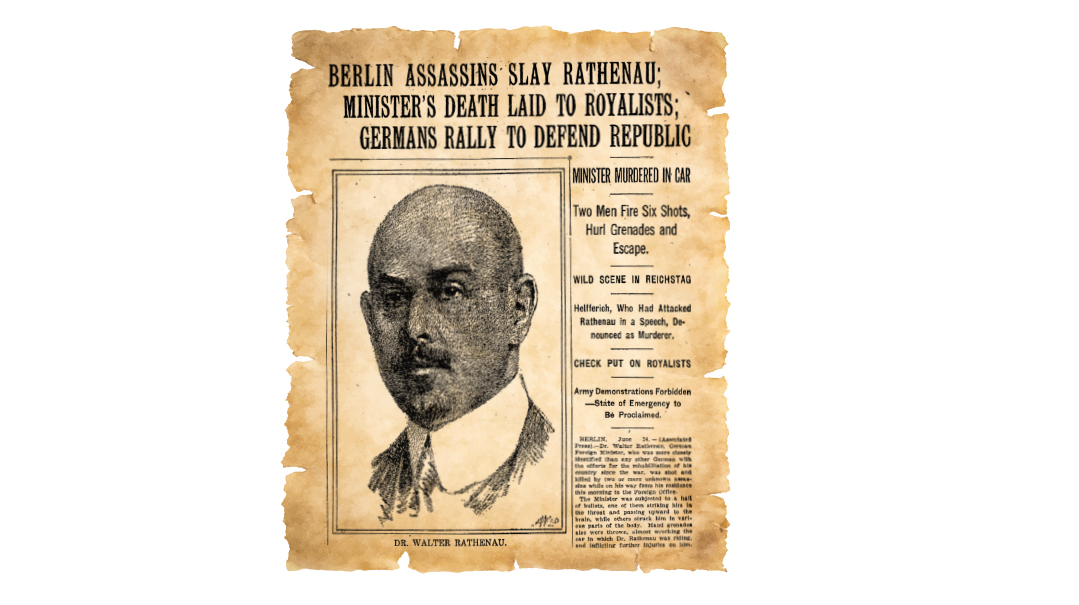Mussar Travels
| February 20, 2024One of the historical curiosities of the mussar movement was the tendency of its tzaddikim to travel

Title: Mussar Travels
Location: New York City
Document: Der Tog
Time: January 1947
One of the historical curiosities of the mussar movement was the tendency of its tzaddikim to travel. Like prophets of old, they moved from place to place, disseminating the lofty message of mussar in one location for a period of time before continuing their sojourn in search of another receptive audience. Though the reasons behind this habit remain somewhat mysterious, it was likely due to a confluence of factors, including unique life circumstances, external world events, and personal choices.
Rav Yisrael Salanter set the tone with his frequent travels. Moving from Salant to Vilna in 1840, he began transmitting his message, which coalesced into the systematic ideology of the mussar movement. In 1848 he fled to Kovno to avoid serving in the government-established rabbinical seminary. Over the ensuing decade, Kovno emerged as the epicenter of the nascent movement, but its founder left in 1857, spending the remaining 26 years of his life traveling throughout Western Europe. He lived in the Prussian cities of Memel, Koenigsberg, and Berlin, and even had a two-year stint in Paris before he passed away in Koenigsberg in 1883.
This tendency to travel among mussarites was continued by Rav Yisrael’s students Rav Itzele Blazer and Rav Naftali Amsterdam. Both served in the rabbinate in far-flung cities of the Russian Empire — Rav Itzele in St. Petersburg and Rav Naftali in Helsinki, Finland. They both returned to Kovno and later settled in Yerushalayim. Interestingly, a primary destination of many baalei mussar was Yerushalayim, where they established themselves in Chatzer Strauss in the Musrara neighborhood.
With the proliferation of Lithuanian yeshivos adopting the mussar model in their curriculum in the early 20th century, mussar mashgichim would often serve in several yeshivos over their careers. Rav Leib Chasman served as mashgiach in Telz, rabbi of Ludvinova, and rabbi and rosh yeshivah in Shtutshyn; he was exiled to Minsk and the Russian interior during World War I, then returned to Shtutshyn following a short stint in Kovno. He immigrated to Eretz Yisrael in 1926 to assume the mashgiach role in the Slabodka yeshivah in Chevron, and finally settled in Yerushalayim following the 1929 Chevron massacre.
The great Mir mashgiach Rav Yerucham Levovitz commenced his career in Radin in 1907, and began his first stint in Mir in 1910. This was interrupted by World War I, and while separated from the Mir Yeshivah, he served as mashgiach successively in Ponevezh, Kelm, and Slabodka, before returning to Mir in 1924.
Between 1906 and 1911, Rav Yosef Leib Nenedik served as mashgiach at Rav Shimon Shkop’s yeshivah in Bryansk and in Lomza. In 1911, he was appointed mashgiach in Radin and remained there during World War I. A new yeshivah opened in Grodno during the war, and in 1916 Rav Nenedik was hired as its mashgiach. This was followed by a short stint in Ponevezh, and in 1923 he began to serve as mashgiach of Kobrin. There he remained until 1935, when he assumed his seventh and final post as mashgiach of Kletzk. It was in that capacity that he was murdered by the Nazis along with most of his students in 1941.
The legendary mashgiach Rav Yechezkel Levenstein (1884–1974) followed a similar trajectory as a traveling mussar giant. Born in Warsaw, he studied in Kelm, and served as an interim mashgiach in Mir Yeshivah for the duration of 1921 to 1924, when Rav Yerucham Levovitz was stuck in Lithuania. Though he stepped down upon Rav Yerucham’s return, he continued to study in Mir and delivered informal shmuessen and vaadim in his home. Shortly thereafter he was recommended by Rav Isser Zalman Meltzer to serve as the mashgiach of Kletzk, where he remained for the next decade. In 1935, he returned for a short time to Mir, where once again he served only in an unofficial capacity. Later that year he immigrated to Eretz Yisrael, where he was employed as mashgiach of Lomza Yeshivah in Petach Tikvah.
Upon the passing of Rav Yerucham Levovitz in 1936, Rav Chatzkel was recalled to Mir after only a year in Petach Tikvah. He remained at the helm of Mir in its last years in Poland, and through the many stops of its long exile during the war years. His inspiring leadership and powerful messages of emunah during those challenging times sustained the yeshivah as it journeyed through Keidan, Lithuania, and across the Soviet Union; Kobe, Japan; and spent six years in Shanghai, China. Rav Chatzkel was the first mashgiach at the newly reestablished Mirrer Yeshivah in Brooklyn, until his immigration in 1949 to Israel, where he was employed by Mir Yerushalayim. With the sudden passing of the Ponevezh mashgiach Rav Eliyahu Eliezer Dessler, Rav Yosef Shlomo Kahaneman, the Ponevezh Rav, hired Rav Chatzkel Levenstein to succeed him in 1954. He remained there for two decades until his passing.
Delivering the Fire of Mussar
In his last years, Rav Chatzkel viewed himself as the last of the Kelm mussar generation, and personally assumed responsibility to spread the light of mussar to a new generation. The octogenarian baal mussar would trek from yeshivah to yeshivah, delivering inspired talks and distributing mussar seforim that he brought along for this purpose.
Though his words generally penetrated the hearts of his listeners, he once delivered a shmuess in a yeshivah in Yerushalayim that was opposed to incorporating a mussar seder in its curriculum. Though its rosh yeshivah had given him permission to deliver a shmuess and distribute sifrei mussar, one student continued studying Gemara loudly in order to interrupt Rav Chatzkel.
He stopped the shmuess and cried out, “Do you see why the study of mussar is so imperative? I’m old enough to be your grandfather, and you don’t have the minimal derech eretz to allow me to speak for a few minutes. That’s what happens when one doesn’t engage in the study of mussar!”
A Hesped on Babe Ruth
One morning in 1948, during Rav Chatzkel’s tenure as mashgiach at the Mirrer Yeshivah in Brooklyn, he walked into the yeshivah and noticed a group of boys huddled in a corner immersed in a discussion. When he inquired what the tumult was all about, he was informed by an American bochur, “Didn’t the mashgiach hear? Babe Ruth the famous baseball shpieler died!”
That evening after Maariv, Rav Chatzkel addressed the yeshivah: “I asked someone what the eulogizers said about the groise baseball shpieler at his levayah. Do you want know what they said? They said that since he grew up in an orphanage, he spent his life going out of his way to help orphans.”
Rav Chatzkel then raised the tone of his voice “Do you realize that his ‘gadlus’ in this world was that he was a great baseball shpieler, but at the levayah they talked about how he took care of orphans? Afilu a goy farshteit that after 120, in the other world, baseball doesn’t count. Life is all about what you do for other people!”
This Tuesday, 18 Adar, will mark the 50th yahrtzeit of Rav Chatzkel Levenstein.
(Originally featured in Mishpacha, Issue 1000)
Oops! We could not locate your form.






